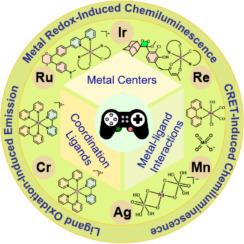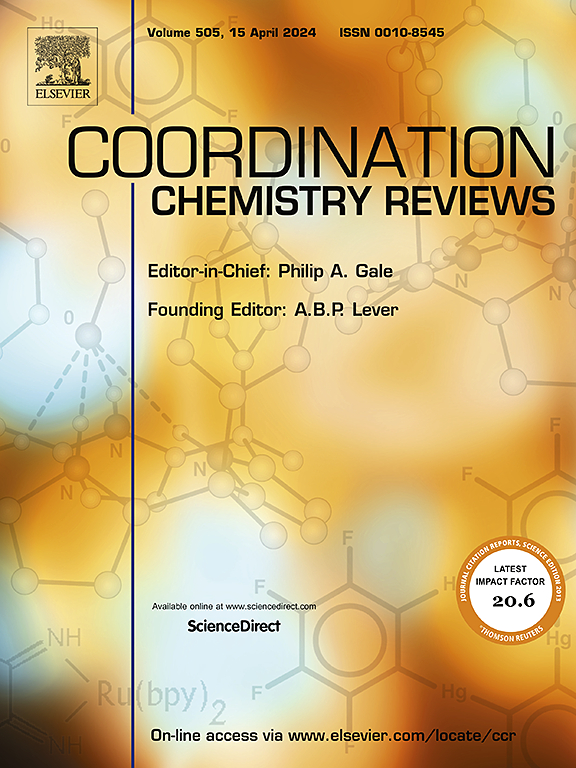Chemiluminescent transition metal complexes: Mechanisms and applications
IF 20.3
1区 化学
Q1 CHEMISTRY, INORGANIC & NUCLEAR
引用次数: 0
Abstract
Chemiluminescence is an enchanting phenomenon involving the emission of photons intrinsically excited by chemical reactions, which has been broadly applied for analytical and bioanalytical sensing as well as theranostic applications. Luminescent transition metal complexes are competitive alternatives to traditional organic fluorophores, as they inherently possess multiple modifiable variations (metal centers, coordination ligands, and metal-ligand interplays) which can be intricately tuned to afford a large number of fascinating combinations with diverse functions and distinct mechanisms of action, providing unprecedented opportunities for innovative theranostic design. Transition metal complexes, like Ru(II), Ir(III), Cr(III), etc., have been employed for constructing chemiluminescence reaction systems. Interestingly, in addition to the merits exhibited by pure organic chemiluminophores, organometallic chemiluminescence systems displayed exceptional advantages, such as distinctive redox reactions on metal centers, easy-to-modify, tunable emission colors/brightness, adjustable reaction kinetics, excellent thermal- and photo-stability, and traceable cellular uptake regardless of metabolisms. However, compared to the thriving studies on pure organic chemiluminophores, the research on chemiluminescent transition metal complexes is still in its early stages though having a long history. Therefore, in this review, we summarize the reported designing principles and unique mechanisms of action exerted by various types of chemiluminescent transition metal complexes, with a focus on their applications in bioimaging and biomedical realms. The remaining challenges and future perspectives for chemiluminescence studies are also discussed. We believe this review can serve as a theoretical guide and application reference for the molecular design of innovative chemiluminophores for a wide variety of bio-applications.


求助全文
约1分钟内获得全文
求助全文
来源期刊

Coordination Chemistry Reviews
化学-无机化学与核化学
CiteScore
34.30
自引率
5.30%
发文量
457
审稿时长
54 days
期刊介绍:
Coordination Chemistry Reviews offers rapid publication of review articles on current and significant topics in coordination chemistry, encompassing organometallic, supramolecular, theoretical, and bioinorganic chemistry. It also covers catalysis, materials chemistry, and metal-organic frameworks from a coordination chemistry perspective. Reviews summarize recent developments or discuss specific techniques, welcoming contributions from both established and emerging researchers.
The journal releases special issues on timely subjects, including those featuring contributions from specific regions or conferences. Occasional full-length book articles are also featured. Additionally, special volumes cover annual reviews of main group chemistry, transition metal group chemistry, and organometallic chemistry. These comprehensive reviews are vital resources for those engaged in coordination chemistry, further establishing Coordination Chemistry Reviews as a hub for insightful surveys in inorganic and physical inorganic chemistry.
 求助内容:
求助内容: 应助结果提醒方式:
应助结果提醒方式:


